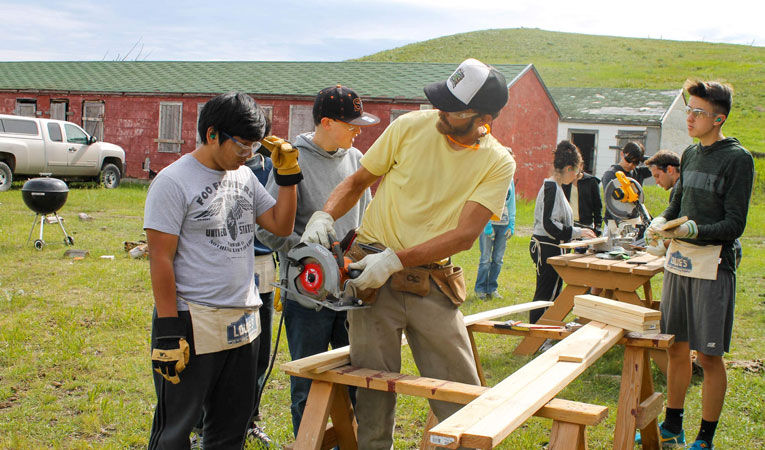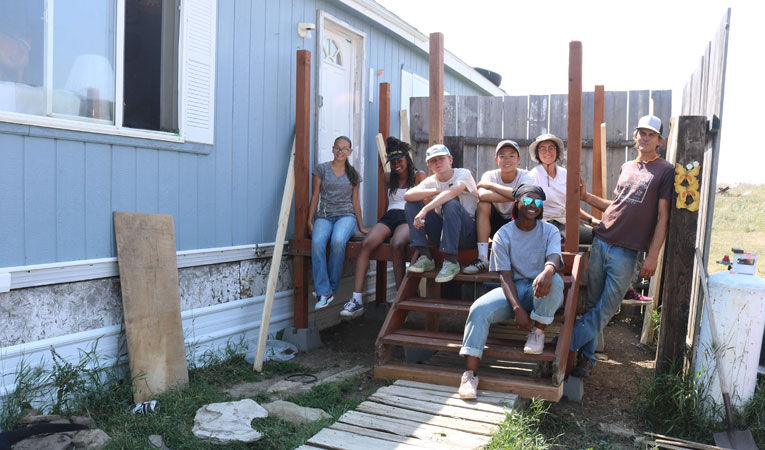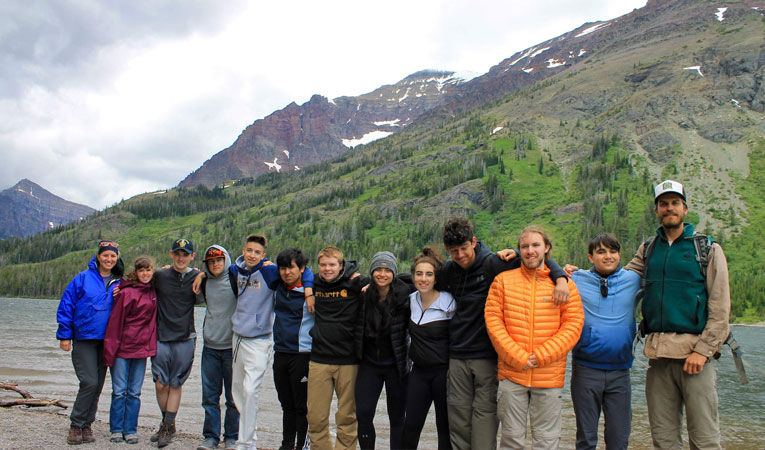Staff Interview with Nick Nelson
Get to know VISIONS Service Adventures' staff!

Nick began working on the Montana Blackfeet program in 2017. He has also led youth trail crews for several seasons in Oregon and guided an outdoor education high school summer program in California. Nick has worked a carpenter, welder, metal artist, farmer, raft guide, truck driver, and ice castle-builder to name a few. He enjoys learning new things, reading, being creative, telling long jokes with minimal punchlines, recreating in the great outdoors, and traveling.
What inspired you to work with VISIONS?
I discovered my passion for volunteer service at the age of 19, when I joined AmeriCorps NCCC (National Civilian Community Corps). During this ten-month team-based service program, I encountered a wealth of new experiences which included disaster recovery work in New Orleans and Mississippi, sharing a Thanksgiving dinner in a FEMA trailer, and learning to run a chainsaw on an emergency ice-storm response deployment in Missouri.

Horseback riding with our custom middle school program from Ashley Hall in South Carolina
In the process, I found a life that blended meaningful work with new and exciting experiences, and forged friendships that are now more than a decade old with people from all around the country that I would never have met otherwise.
When I came across VISIONS I immediately recognized it as being in the same vein as NCCC, and I saw working with VISIONS as my way of helping to create those same kinds of life-changing experiences for the next generation.
Can you tell us about your role as the Director of the 2018 Montana Blackfeet Program?
As the 2018 Montana Blackfeet Program Director, I had a thousand little jobs wrapped up into one—it’s difficult to summarize in a paragraph! In the spring I was responsible for getting in touch with all of our community contacts on the Blackfeet reservation, setting up meaningful service projects that the community wanted and needed, and arranging cultural and recreational activities to ensure that our participants would get the absolute most out of their time in Montana that we could possibly offer.
Once summer got rolling, my role shifted to managing a supremely talented staff team that then translated all that planning it into a strong program that our participants could step into. As the program progressed we all—myself, the staff, and the participants—learned to thrive together as this funky little community that would inevitably form so long as I kept an eye that all the right pieces were lining up.
How do you help support VISIONS participants?
Supporting VISIONS participants is the whole point of my job. So much of the value in this type of program is allowing participants the opportunity to push themselves and explore what it’s like to be in a new group of people, in a new place, doing unfamiliar things in an unfamiliar culture. The challenge comes in finding the right balance between safety and support, and allowing that freedom to work its magic. I think the way that I do this is two-fold. First by providing a solid, consistent framework to the program, and then by having the flexibility and problem-solving skills to meet needs as they arise.

1st construction project building adirondack chairs during carpentry orientation at our home for the summer - the Eloise Cobell memorial ranch
Can you tell us what participants can expect from the Montana Blackfeet Program?
Expect to have the best month of your life so far, and probably not for any of the reasons you could imagine before you go and experience it. Expect to learn a lot about yourself, about others, about hard work, about the land, and about the Blackfeet Nation.
What makes VISIONS, and programs like the Montana Blackfeet Program, unique?
I think one thing that really sets VISIONS apart is the way that we meld into our host communities through service. The VISIONS model holds that our service projects are not our way of fixing problems that we see, but instead are our way of saying thank you to the people who invite us into their land and their culture, and I think that this approach opens the door for powerful connections to be formed between our participants and the communities we serve.
What qualities do you look for in VISIONS participants?
The number one quality I look for is a strong desire to learn and engage in new experiences. The community that hosts us, the work we do, the adventures we go out on, and even just our day-to-day routine are all so unlike what most youth have typically experienced that the biggest difference-maker ends up being a genuine positive attitude. A strong work ethic is also invaluable.

Midway through deck and staircase construction for one of our community partners in Browning, MT
If you could participate on any VISIONS program, which would you choose and why?
It would be hard to top the Montana program, I love the community that we get to be a part of and the mountainous landscape feels like home. If I had to pick somewhere else I would probably choose Ecuador. I’ve traveled around South America before and I thoroughly enjoyed my time there, and I’ve always wanted to see the Galapagos Islands.
Why do you think it is important for individuals to travel and experience new cultures?
Traveling in a way that truly exposes you to new cultures can be life-altering. It gives you a perspective that I believe cannot be attained in any other way. Seeing the differences in how people, communities, and cultures live on this earth allows for deep insight into the way you yourself are choosing to live your life. It’s also quite simply exciting and very fun.

Group shot after a nice relaxing cold beach session at Two Medicine Lake in Glacier National Park
How do you work to combine meaningful work with exciting adventures?
Our location in the heart of the Blackfeet Nation makes this particularly easy. There is a definite need on the reservation for the type of service work that our groups can provide, across the board from wheelchair ramp construction for elders to assistance with youth summer lunch programs.
When we’re not hard at work, Glacier National Park is right in our backyard and the opportunities for adventure and exploration are endless. In some cases we even get to combine the two—this last year we combined an invasive species ID and mitigation project with a fun tubing adventure down one of the local rivers.
What hopes do you have for the future of VISIONS?
I am a builder and the construction projects are one of my favorite aspects of the VISIONS programs. I would love to see the scale and scope of the projects that VISIONS tackles continue to grow. I believe our groups are capable of a lot and I think we have only begun to see how much that could potentially be.
Beyond that I hope VISIONS and similar programs only grow in size and scale so that more people get to have the same kind of experiences as my participants this last summer.

